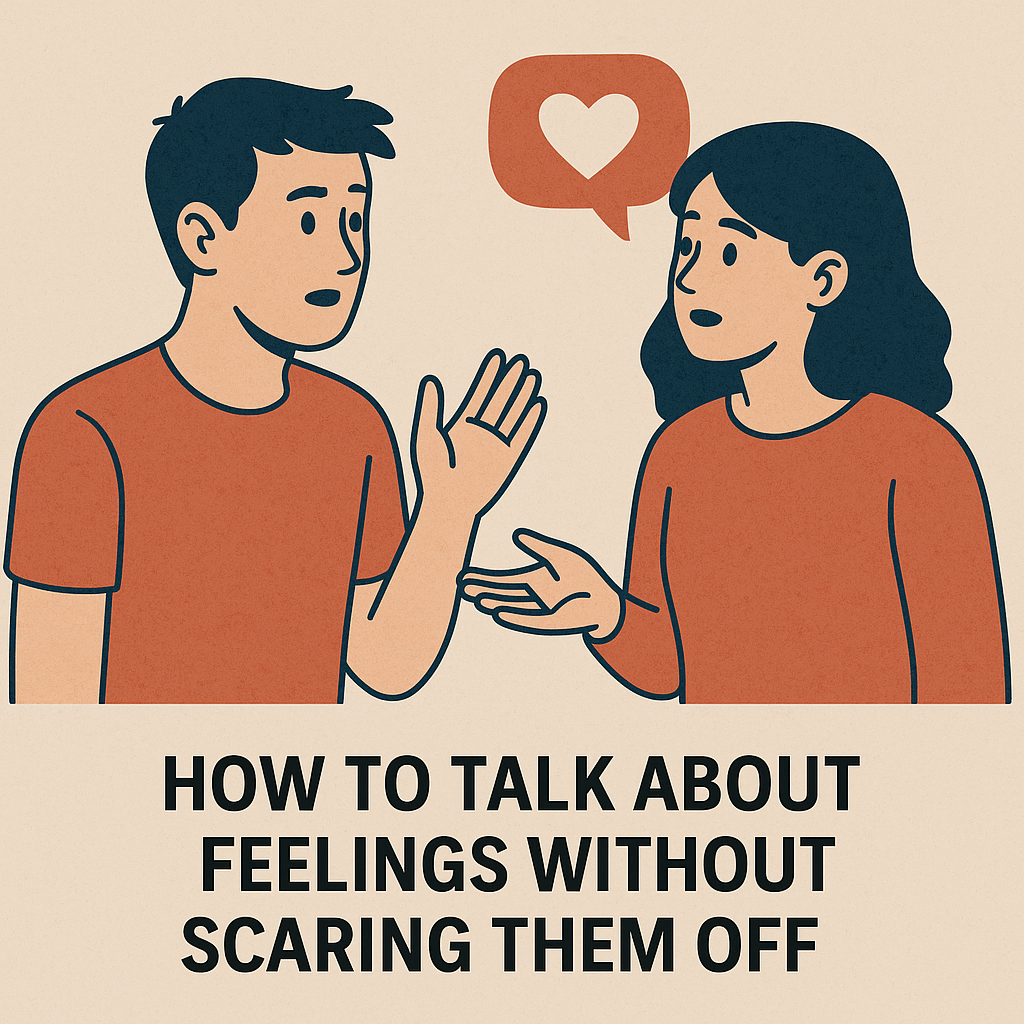
Introduction
Talking about your feelings can feel like walking a tightrope. Say too much too soon, and you risk pushing someone away. Say nothing at all, and you build silent walls between you. The truth is, expressing emotions is necessary for a real connection—but there’s a right way to do it.
This article breaks down how to talk about your feelings without overwhelming your partner. You’ll learn why emotional communication matters, what common mistakes to avoid, and how to open up in a way that builds trust instead of tension.
1. Why Talking About Feelings Matters in Healthy Relationships
We’re wired to connect, and emotional honesty is one of the strongest ways to create that connection. When you share how you feel, you give your partner a chance to understand you—and to respond in a way that brings you closer.
Bottling things up can lead to distance, resentment, or blow-ups later on. But when feelings are expressed clearly and calmly, they build trust and emotional intimacy—the glue that keeps relationships strong.
Studies show that vulnerability is key to deep connection. Researcher Brené Brown has found that people who allow themselves to be vulnerable tend to have stronger relationships and feel more fulfilled.
Bottom line: When done right, emotional honesty creates more stability, not less.
2. Common Mistakes That Push People Away
Many people get turned off not by what you say, but how you say it. Here are a few common missteps:
- Emotional overload: Dropping a heavy emotional bomb too early in the relationship or conversation
- Blame-focused language: Using “you” statements instead of owning your feelings (“You never listen” vs. “I feel unheard”)
- Seeking validation instead of connection: Wanting a specific response rather than simply wanting to be seen
- Ignoring timing: Bringing up serious emotions when your partner is stressed, distracted, or unavailable
Avoid the trap of unloading without checking in. Think of sharing feelings like opening a door, not swinging a wrecking ball.
3. How to Know When It’s the Right Time to Talk
Timing matters just as much as content. Talking about your feelings when your partner is distracted, tired, or emotionally maxed out won’t get you very far.
Watch for signs that they’re emotionally available:
- They’re making eye contact
- Their body language is open and engaged
- They’re not multitasking or rushing
Red flags to wait:
- They’re in the middle of something stressful
- They seem withdrawn or irritable
- It’s late, and they’re clearly exhausted
Pro tip: Always ask for permission. A simple “Can we talk about something that’s been on my mind?” gives your partner a chance to be present—or to request a better time.
4. How to Share Your Feelings Without Making It Heavy
Talking about your feelings doesn’t have to be dramatic. You can express vulnerability with clarity and lightness by using structure and intention.
Use this simple framework:
- Set the context
“There’s something I’ve been thinking about—can I share it with you?” - Name the feeling
“I’ve been feeling a little anxious lately.” - Explain the cause
“I think it’s because we haven’t spent as much time together.” - Invite connection
“I wanted to talk about it with you—not to blame you, just to be open.”
Stick to “I” statements, keep it short and grounded, and avoid expecting an immediate fix.
5. Reading Their Response and Adjusting in Real Time
Once you start the conversation, pay attention to how your partner responds. Not all silence is rejection—some people just need time to process.
Watch for signs of overwhelm:
- Short or distracted replies
- Tense or closed-off body language
- Deflecting or trying to change the subject
If they seem off, pause. Say something like, “I’m getting the sense this might not be the best time—want to come back to it later?”
Also, make sure you’re listening, too. Ask how they feel, reflect what they say, and make space for their emotions. This turns a one-sided confession into a real conversation.
6. What to Do If They Pull Away
Even if you do everything “right,” your partner might still get distant. This isn’t necessarily a sign of doom—it could just mean they need space to sort through their own emotions.
If they pull away:
- Don’t chase or demand. Let them know you’re open to talk when they’re ready.
- Stay grounded. Manage your own anxiety rather than trying to control theirs.
- Keep showing up. Be consistent without pushing.
Example: “I noticed you seemed quiet after we talked. I want you to know I’m here whenever you’re ready, and I care about where you’re at.”
Give space, not silence. The difference is that one invites return, the other builds walls.
7. Building a Relationship Where Feelings Are Safe to Share
Creating emotional safety isn’t a one-time thing—it’s an ongoing process. Over time, regular, calm, and respectful emotional check-ins can transform the way you relate to each other.
To build emotional safety:
- Make small emotional expressions a normal part of conversation
- Reinforce trust by staying open when your partner shares
- Don’t weaponize past vulnerabilities
- Celebrate honesty—even when it’s messy
Quick routine:
Try a weekly 10-minute check-in with questions like:
- “How are we doing emotionally?”
- “Anything you’ve been holding in?”
- “What’s something I could do to support you this week?”
When both people feel safe to be real, the relationship becomes stronger and more resilient.
Conclusion
Expressing your feelings doesn’t have to mean scaring someone off. When done thoughtfully, emotional honesty creates deeper understanding and connection. It’s not about controlling the outcome—it’s about showing up as your real self and inviting your partner to do the same.
Start small, choose the right moments, and speak with clarity and care. The more you practice, the easier it gets—and the more your relationships will thrive.



